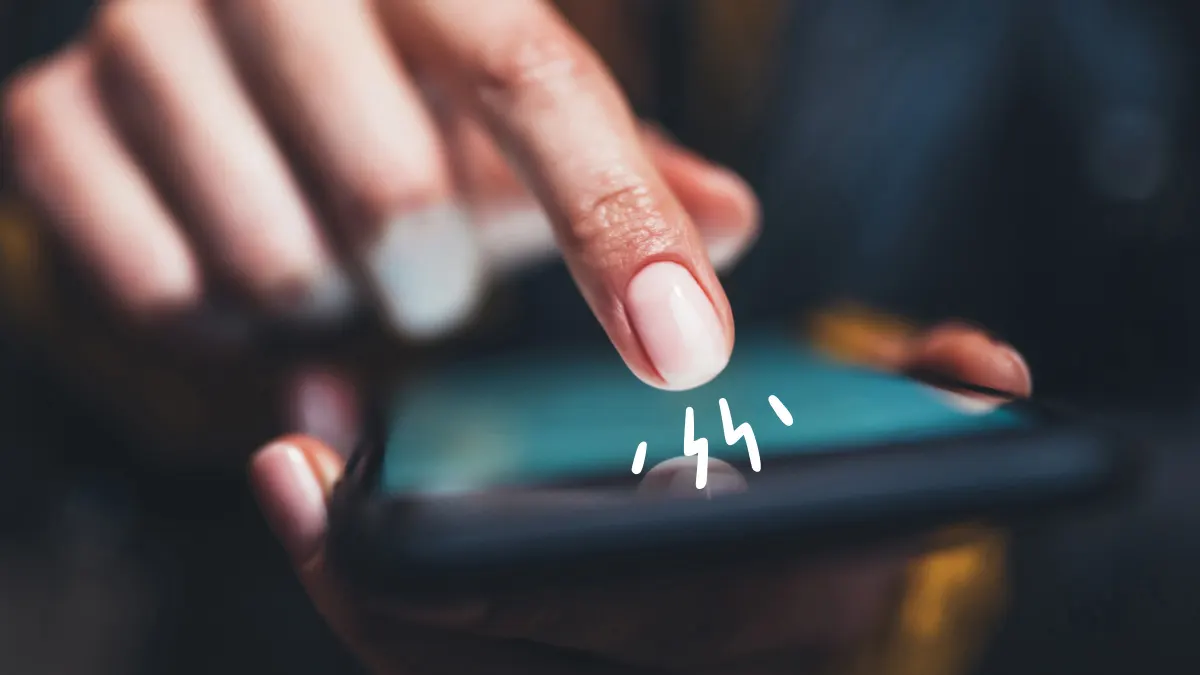How to fix an iPhone screen that isn’t responding to touch

Your iPhone® handles a lot to make your life convenient. Calls, messages, health tracking, social media, capturing moments with photos and videos—everything’s just a tap away. So, when your iPhone screen isn’t responding to touch, bringing everything to an abrupt stop, what do you do?
You can likely fix your touchscreen issue in a few easy steps. We’ll explain how.
At Asurion, when tech breaks, we fix it. Whether you have a lifting iPhone screen or an overheating smartphone, our experts can help you solve your tech issues. Here’s how to fix common iPhone screen not responding to touch issues.
Why your iPhone screen might stop responding
Your iPhone’s touchscreen might be acting up for several reasons.
Software freezes or glitches
Software issues resulting from settings changes or software updates can cause your touchscreen to malfunction or fail to register taps or swipes. Glitchy software can also make your iPhone screen flicker.
Physical damage
Dropping or applying too much pressure can damage the screen or cause it to react inconsistently to inputs. If you have a cracked iPhone screen, the fractures can interfere with touch sensitivity.
Moisture or debris interference
Submerging your iPhone in water or exposing it to other liquids can harm internal components and affect touchscreen performance. Sometimes, even small debris under the screen or around the edges can block touch signals and make the display less responsive.
Restart or force restart your iPhone
The first option is to try a simple restart to resolve temporary glitches that are causing the screen to freeze.
For iPhone X or later models
- Press and hold one of the Volume buttons + the Side button until the power-off slider appears.
- Swipe the slider all the way to the right, then give your iPhone 30 seconds to shut down.
- Press the Side button until the Apple® logo appears to turn your iPhone on.
For iPhone SE 2nd generation to iPhone 8
- Press and hold the Side button until you see the power-off slider.
- Drag the slider and wait 30 seconds for your phone to turn off.
- Hold the Side button until the Apple logo appears to switch your iPhone on.
For iPhone SE 1st generation or earlier
- Press and hold the Top button until the power-off slider appears.
- Switch your phone off and on again.
Force restart your iPhone
If your screen is completely frozen and you can’t swipe the power slider, try a force restart.
- iPhone 8 or newer models: Quickly press Volume Up > Volume Down > hold the Side button until the Apple logo appears.
- iPhone 7: Press and hold the Volume Down and Side buttons.
- Older models: Press the Home + Power buttons.
Update iOS and apps
Verify your iPhone is running the latest operating system. An outdated iOS® can cause your screen to freeze or respond poorly. Here’s how to fix it with an update:
- Go to Settings.
- Select General > Software Update.
- If there is an update available, tap Download and Install.
You can also follow our guide on how to update your iPhone.
If you’re still having issues, update all your apps. Go to the App Store®, then tap your profile icon. Update any apps with newer versions.
Still having issues after trying these fixes? Your touchscreen problem may be hardware-related. It’s best to seek professional iPhone screen repair at uBreakiFix® by Asurion.
Persistently unresponsive screen
If your display still doesn’t react after updates and restarts, the problem could be hardware. A professional will diagnose the issue and replace faulty components.
Visible damage
Cracks or chips can interfere with touch sensors and may spread if not repaired. To restore full functionality, you’ll need a replacement screen.
Liquid exposure
Even brief contact with water can corrode components and cause touch problems. Liquid damage usually requires professional service.
Tried these steps and still need help? We got you. Get your tech problem solved when you call or chat with an expert now.
How to prevent future touchscreen issues
- Keep your iPhone updated to minimize software glitches.
- Use a sturdy case and screen protector to reduce risk of cracks.
- Avoid exposing your phone to moisture.
- Consider a protection plan to cover repair or replacement if something goes wrong.
The Asurion® trademarks and logos are the property of Asurion, LLC. All rights reserved. All other trademarks are the property of their respective owners. Asurion is not affiliated with, sponsored by, or endorsed by any of the respective owners of the other trademarks appearing herein.